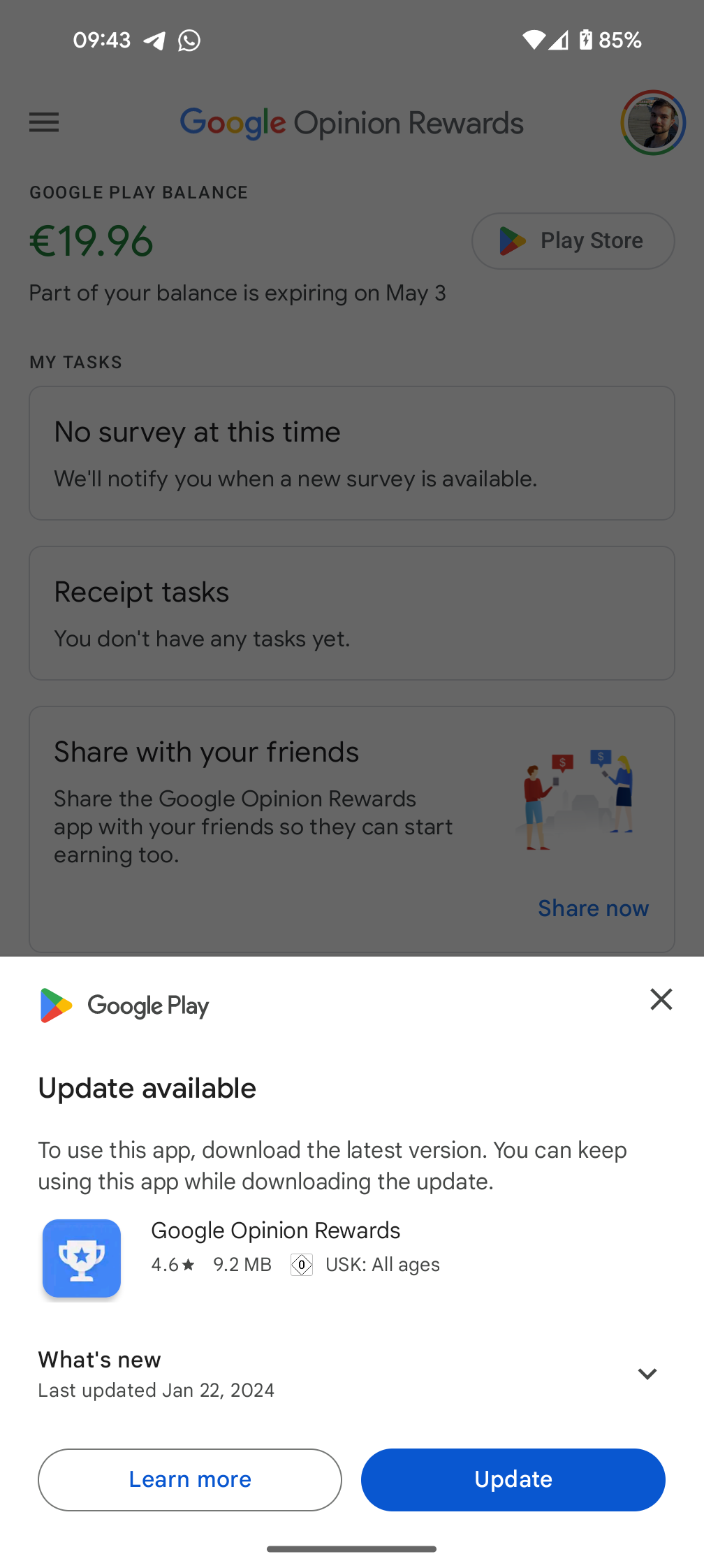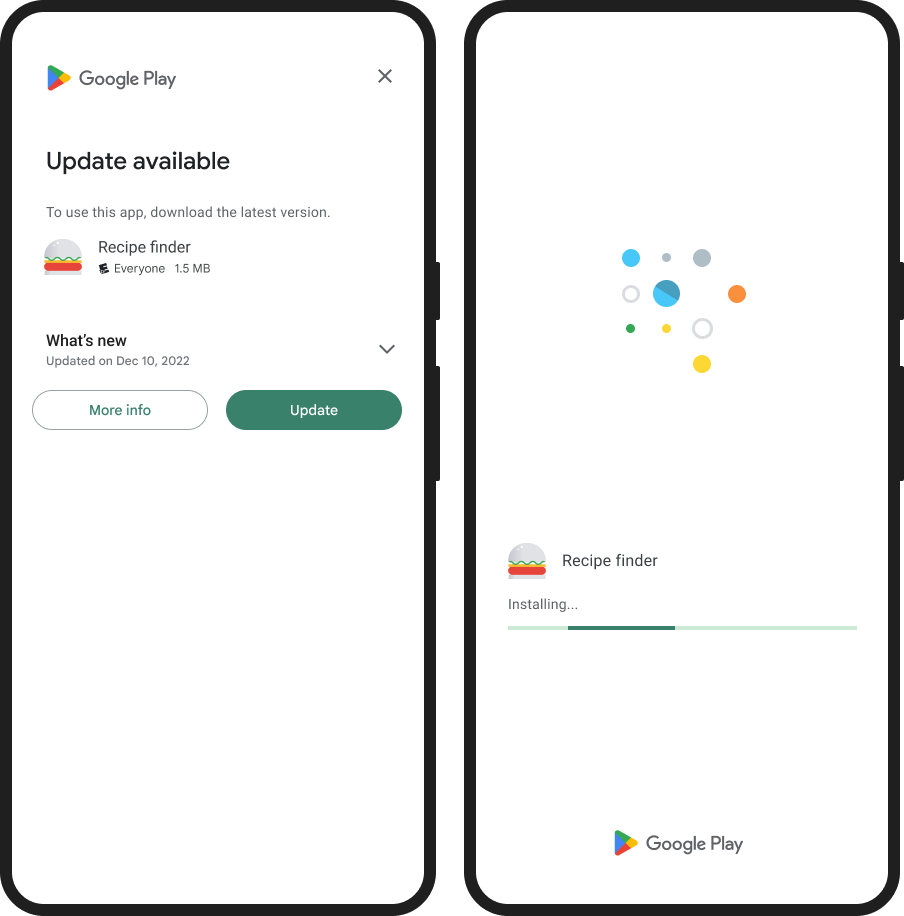Summary
- Updating apps and the OS of your device keeps them secure and provides access to new features. Google is standardizing in-app update prompts to make it easier for users to update their apps.
- Google Play Store offers app updates and users can check for updates in the Manage apps & device section. App developers can also prompt users to update through in-app alerts.
- Google has introduced a new full-screen notification prompt for app updates, making it convenient for users to update with a single tap. This prompt helps convey urgency and encourages user interaction.
Keeping your apps and OS updated ensures you have the newest features supported on your devices, and also keeps you safe from security loopholes exploited by bad actors. On Android, Google makes it easy to access app updates through the Play Store and OS updates through the Play System. App developers also have the freedom of prompting users to update if they’re still running outdated versions. Now, Google is bringing a modicum of standardization to these in-app update prompts.
App updates on Android are delivered through the Google Play Store, where users can visit the Manage apps & device section to check for updates. Google also makes it easy to install all pending updates with a single tap, or set up auto-updation. Alternatively, app developers can display in-app alerts on older versions, prompting users to update. However, their implementations aren’t standardized, ranging from brief toast messages to persistent notifications.
In a recent update on the Android Developers Blog, Google shared a new tool which would prompt users to update. Once activated for outdated versions of an app, it will show up as a full-screen notification with ready access to the Update button on the Play Store. Another implementation we spotted on the Google Opinion Rewards app showed a card with the Update button. Such prominent and convenient placement of the button saves the users a few taps and redirects before the app starts updating. It’s also an effective way of conveying a sense of urgency to the user, especially if the developer updates the change log on the Play Store with the latest changes.
Source: Google
Google’s new full-screen prompt for app updates
To deploy this update prompt, app developers can navigate to the Releases section of the Google Play Console, and select the outdated app versions they wish to target. Google explains that implementation is also possible through the Play Developer API, but the targeted app versions need to be built as app bundles. However, this update prompt is simple enough to integrate, even if a developer hasn’t integrated a custom update prompt before. Google says the Play Developer API will soon support targeting multiple outdated app versions at once, further simplifying the legwork for developers.

A screenshot from the Google Opionon Rewards app showing another version of the update prompt
To push companies and independent devs towards the new system, Google also gathered stats which suggest that over 50% of the users seeing the prompts are responding to it. We wouldn’t be surprised to see several mainstream apps ditching custom prompts in favor of this new UI given how easy they are to deploy. Proven efficacy of fostering user interaction is just the added cherry on top.
Source link



